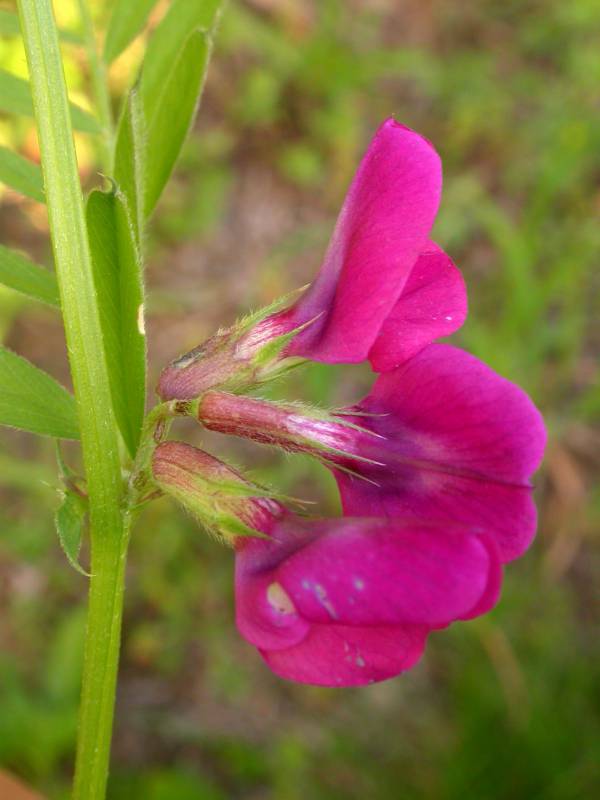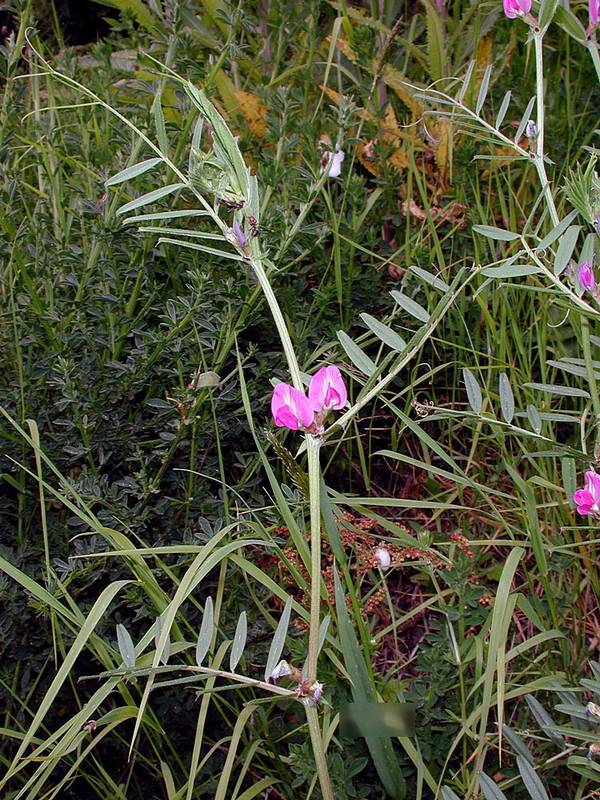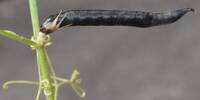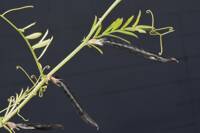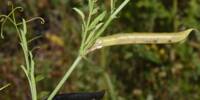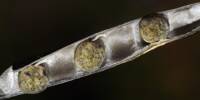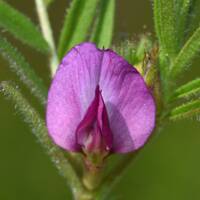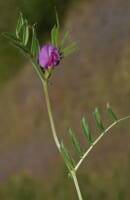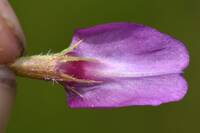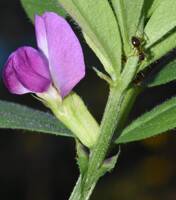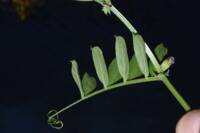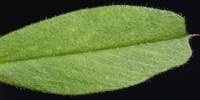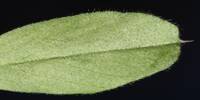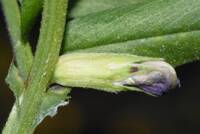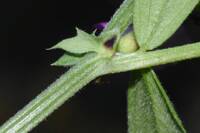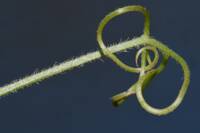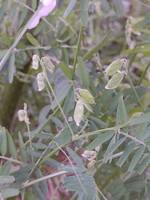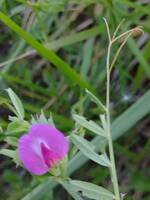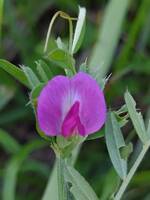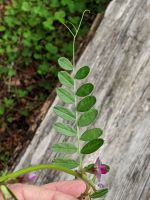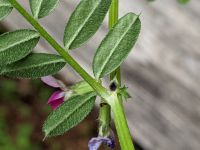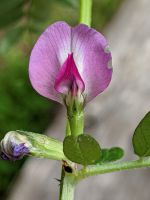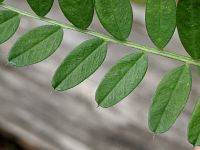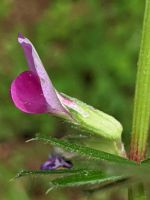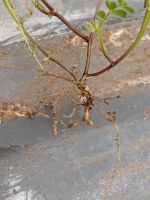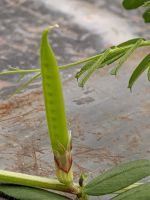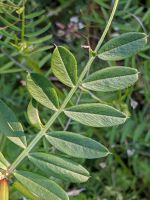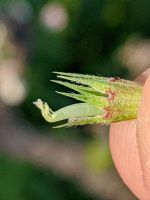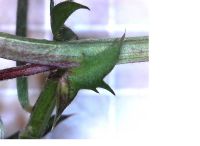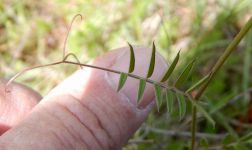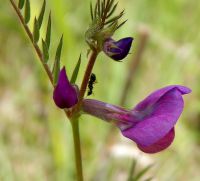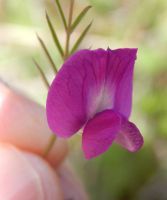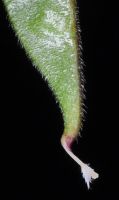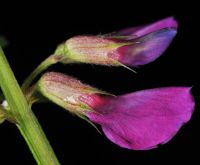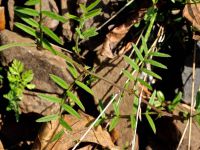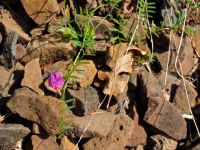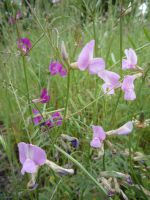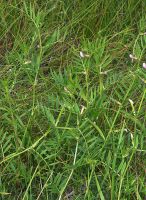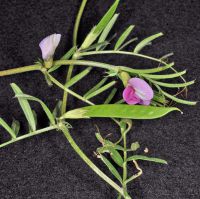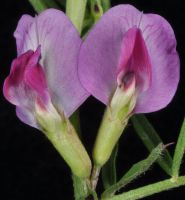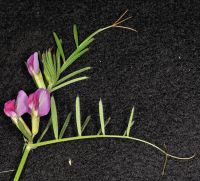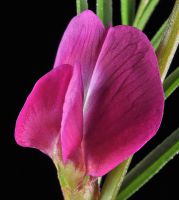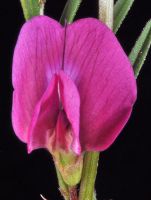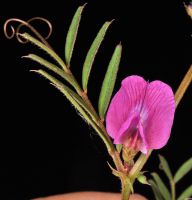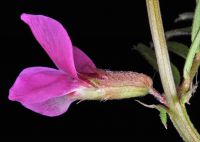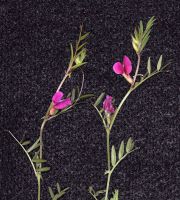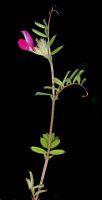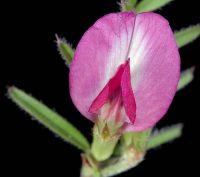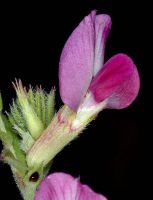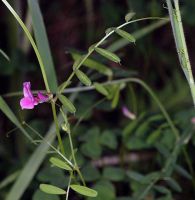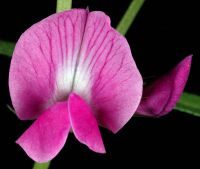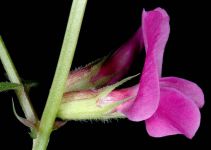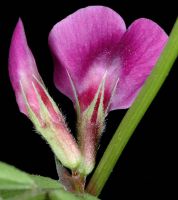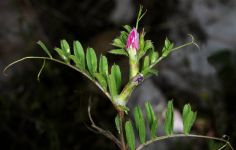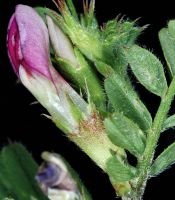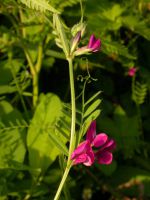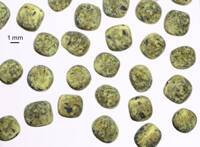Distribution: Occurring on both sides of the Cascades crest and east in the Columbia River Gorge in Washington; Alaska to California, east across most of North America to the Atlantic Coast.
Habitat: Roadsides, fields, forest edges, thickets, lawns, wastelots, and other disturbed open areas.
Flowers: April-July
Origin: Introduced from Eurasia
Growth Duration: Annual
Conservation Status: Not of concern
Pollination: Bumblebees, bees, butterflies
Glabrous to villous perennial, the stems 3-8 dm. tall.
Leaves pinnate; leaflets 10-14, linear to obovate-oblanceolate, 1.5-3 cm. long, rounded or with a shallow notch, and with a needle-like tip; stipules 3-8 mm. long, deeply toothed or saggitate; tendrils well-developed, branched.
Flowers pea-like, 1-3 in the leaf axils, short-pedunculate, 15-25 mm. long; calyx over half the length of the corolla, the 5 teeth narrowly awl-shaped, equal, usually longer than the tube; banner erect, orchid to purplish; wings often red; style densely bearded at the tip.
Pod 3-7 cm. long.
Publication: Sp. Pl. 2: 736. 1753.
-
var. angustifolia – tare, common vetch
 Occurring on both sides of the Cascades crest and east in the Columbia River Gorge in Washington; Alaska to California, east across most of North America to the Atlantic Coast.
Occurring on both sides of the Cascades crest and east in the Columbia River Gorge in Washington; Alaska to California, east across most of North America to the Atlantic Coast. -
var. sativa – common vetch
 Occurring west of the Cascades in Washington; British Columbia to California, also in the southeastern U.S.
Occurring west of the Cascades in Washington; British Columbia to California, also in the southeastern U.S.
PNW Herbaria: Specimen records of Vicia sativa in the Consortium of Pacific Northwest Herbaria database
WA Flora Checklist: Vicia sativa checklist entry
OregonFlora: Vicia sativa information
E-Flora BC: Vicia sativa atlas page
CalPhotos: Vicia sativa photos

